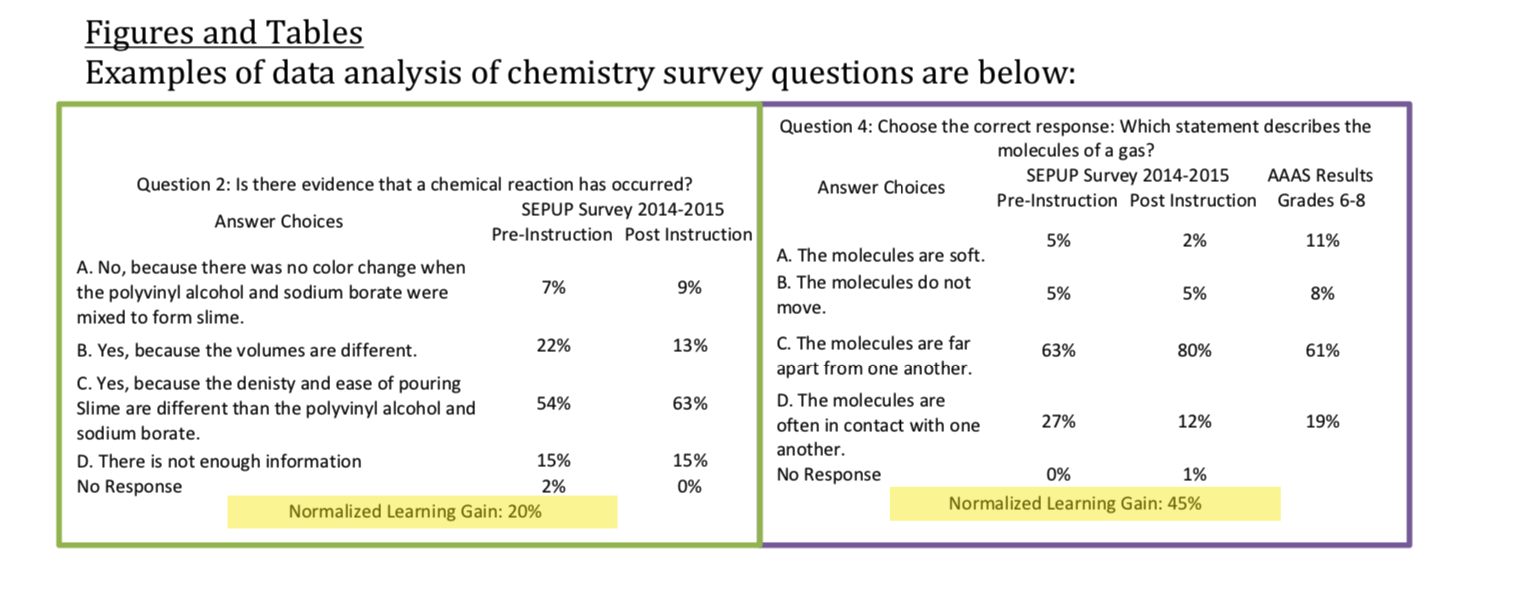Findings:
- Our students outperformed the reported AAAS and MOSART results for every question that we incorporated into the survey across multiple concepts including conservation of matter, structure and properties of matter, and chemical reactions
-
Of the 10 multiple choice questions there were 7 questions with a learning gain above 25%
The preliminary findings listed above reflect 250 7th and 8th grade students from 7 different teachers that completed both the pre and post surveys.
Students’ Understanding of Middle School SEPUP Chemistry Curriculum (pg 30)
Researchers
Stephanie Virgilio, Clint Eaton, Mitchell R. M. Bruce, Somnath Sinha, Laura Millay
Research Subjects
7th and 8th grade SEPUP Students from Rural Schools in Maine
Focus
A survey was developed and revised after a discussion with in-service teachers who participated in a week-long chemistry workshop. The goal was to align a survey with the Science Education for Public Understanding Program (SEPUP) Chemistry curriculum that studied the students’ understanding of major Chemistry concepts and their misconceptions. Within the 13-question survey the major concepts covered were conservation of matter, structure and properties of matter, and chemical reactions.
Project Dates
The first iteration of the survey was distributed in the 2013-2014 academic year, which was then revised for the 2014-2015 academic year. The findings reported in this research are from the most recent survey data collection. This project is currently ongoing.
Data collected
A pre- and post-Chemistry-instruction 13-question survey focused on chemistry concepts included within the SEPUP curriculum with some classroom observations that included video and audio recordings.
Next Steps
The next steps in this project is to take a more in depth look at the written responses and also the implications that our findings have on the curriculum, students’ understanding of chemistry concepts, and teaching methods. We have also revised some questions in the survey in order to gain deeper understanding of student thinking, and analysis of survey data is ongoing.
Figures and Tables
Examples of data analysis of chemistry survey questions are below:
